site search
online catalog
CIVIL WAR EAGLE POMMEL PRESENTATION SWORD BY PATIENTS AT MOWER GENERAL HOSPITAL TO DR. J.A.C. HANLY, MARCH 20th, 1863

Hover to zoom


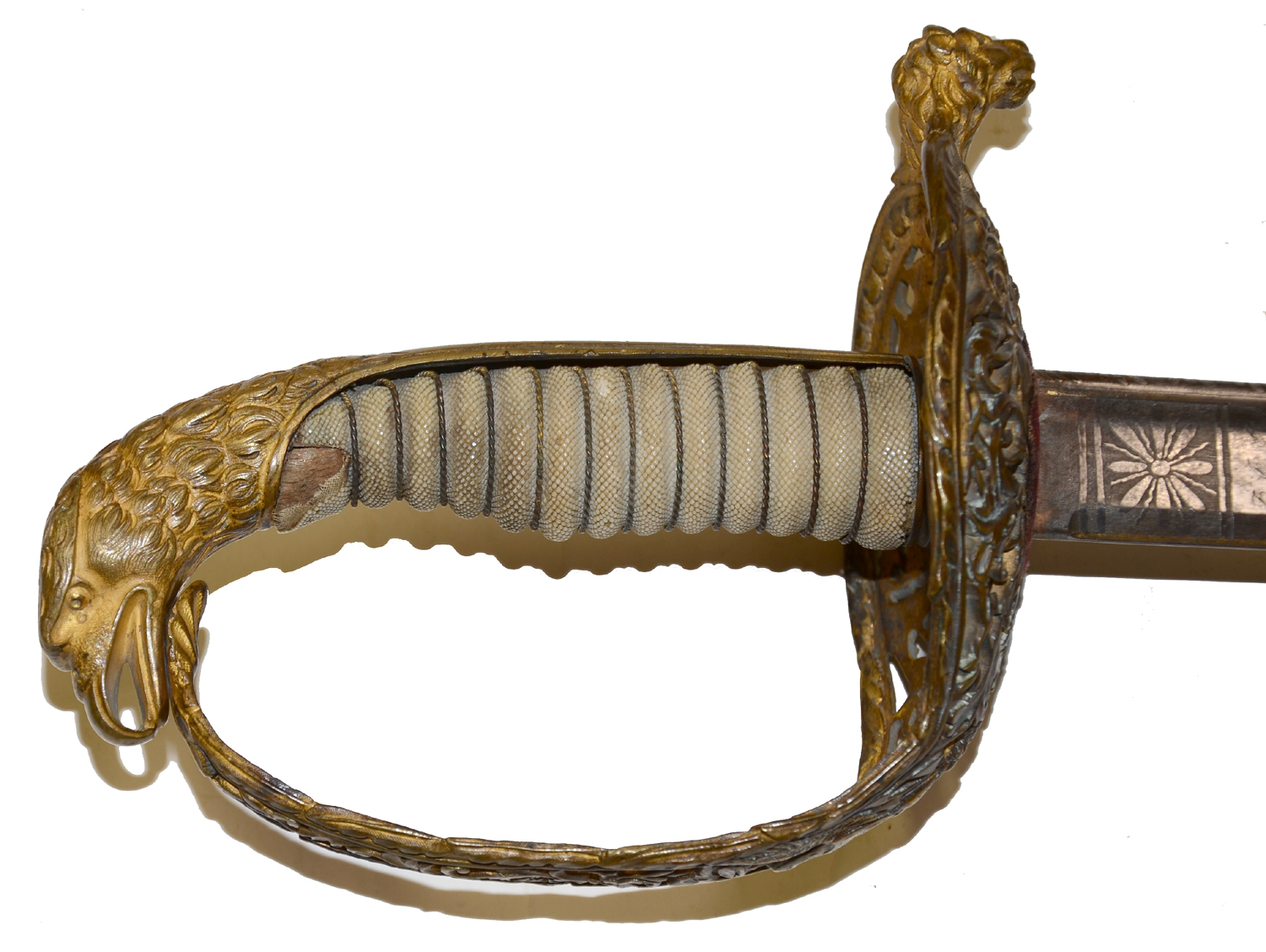
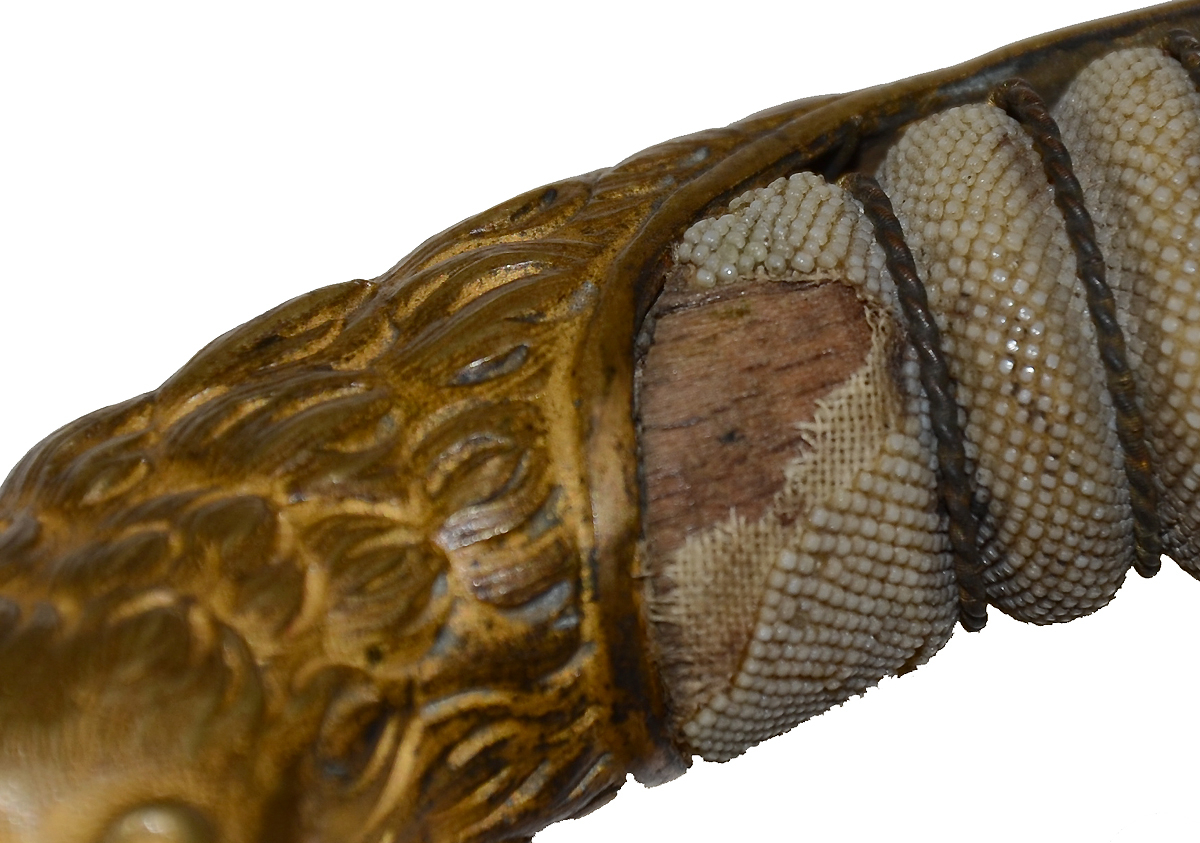
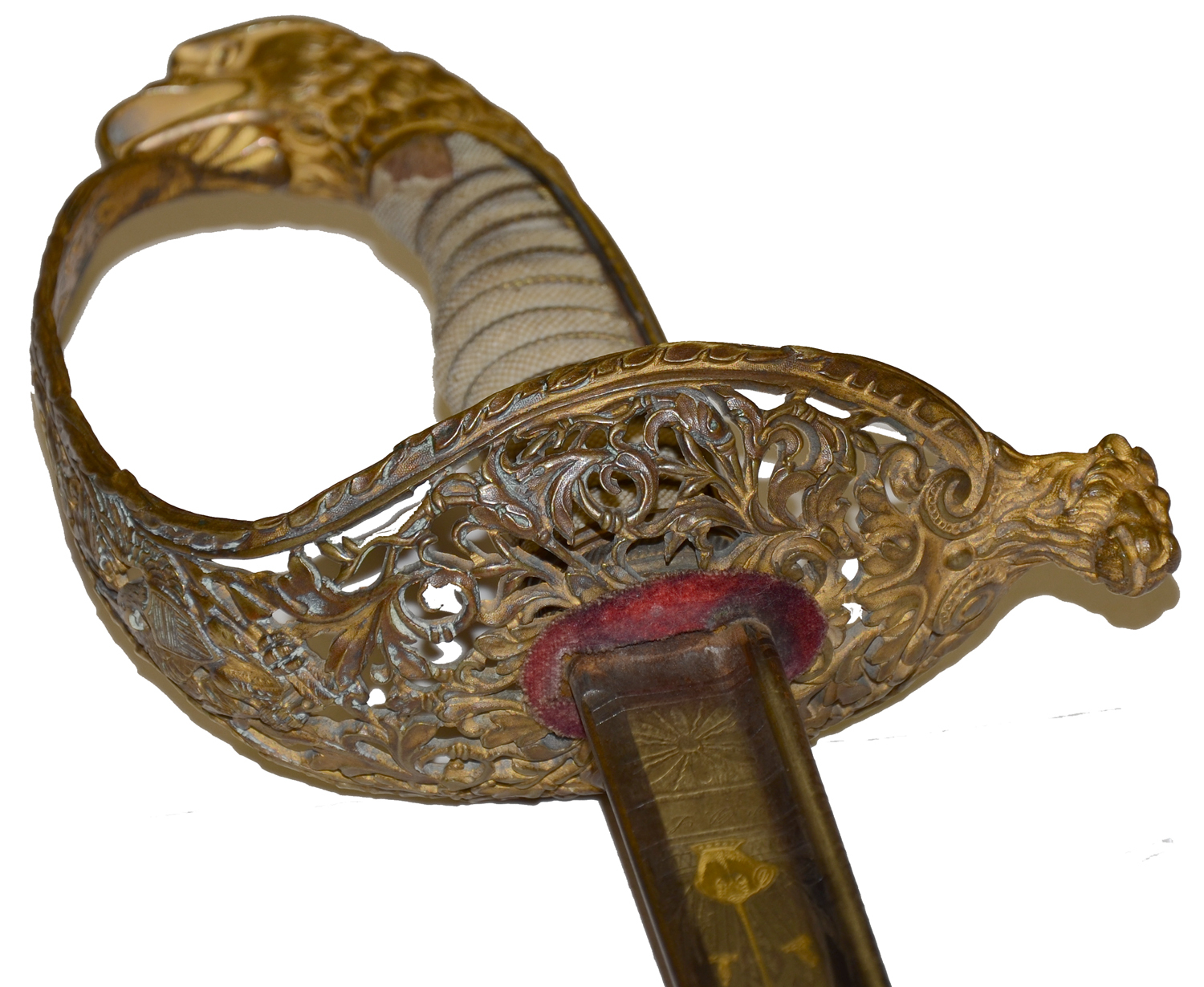
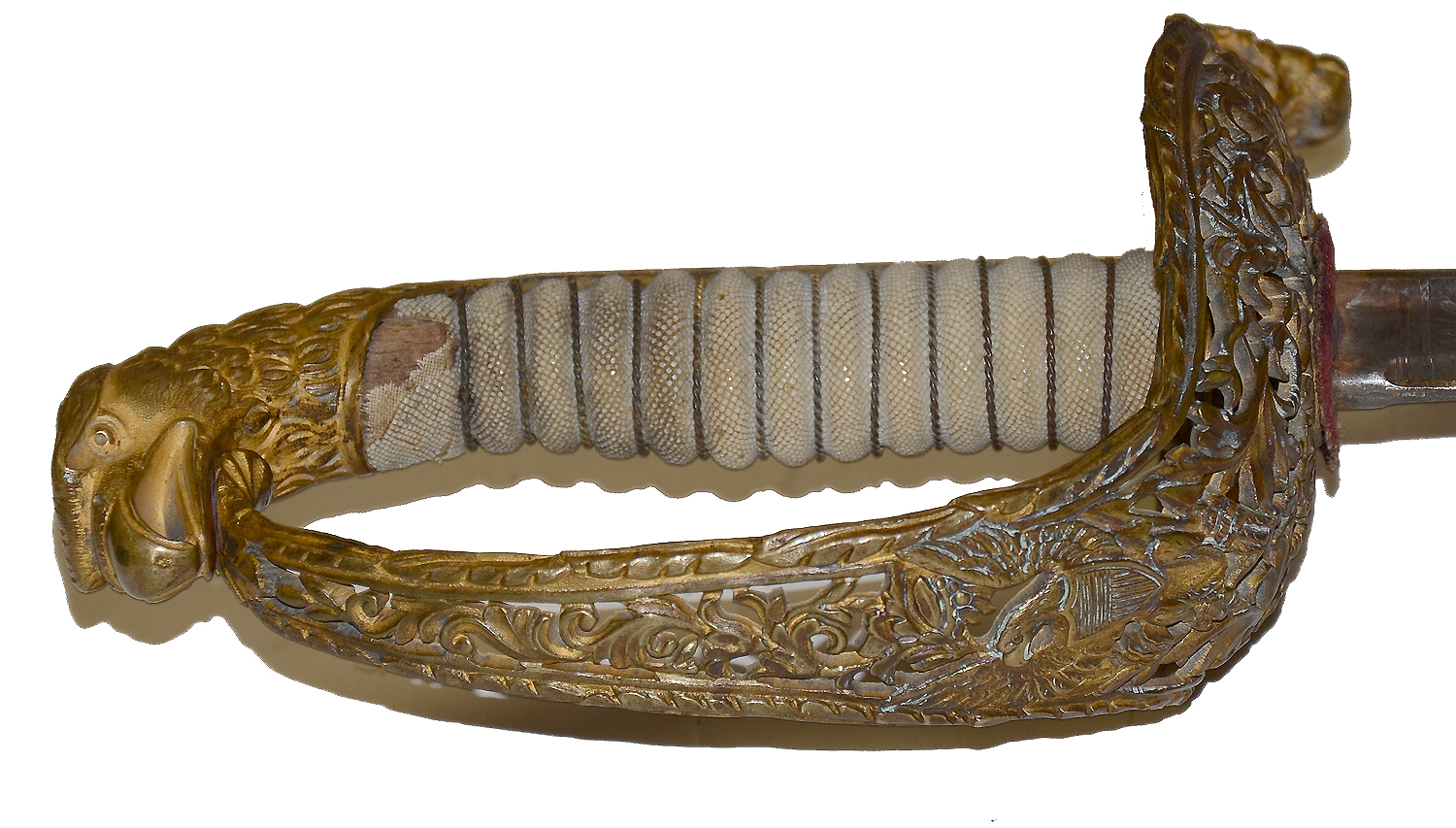
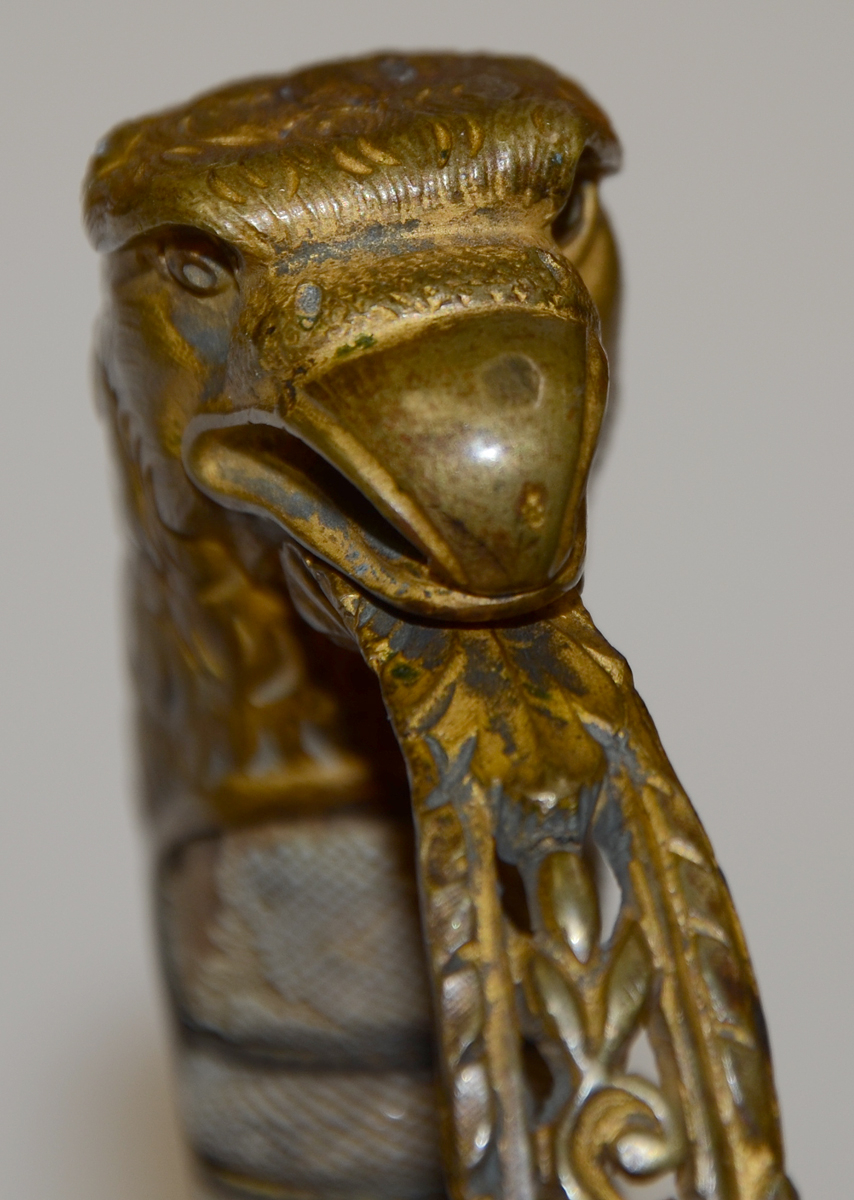


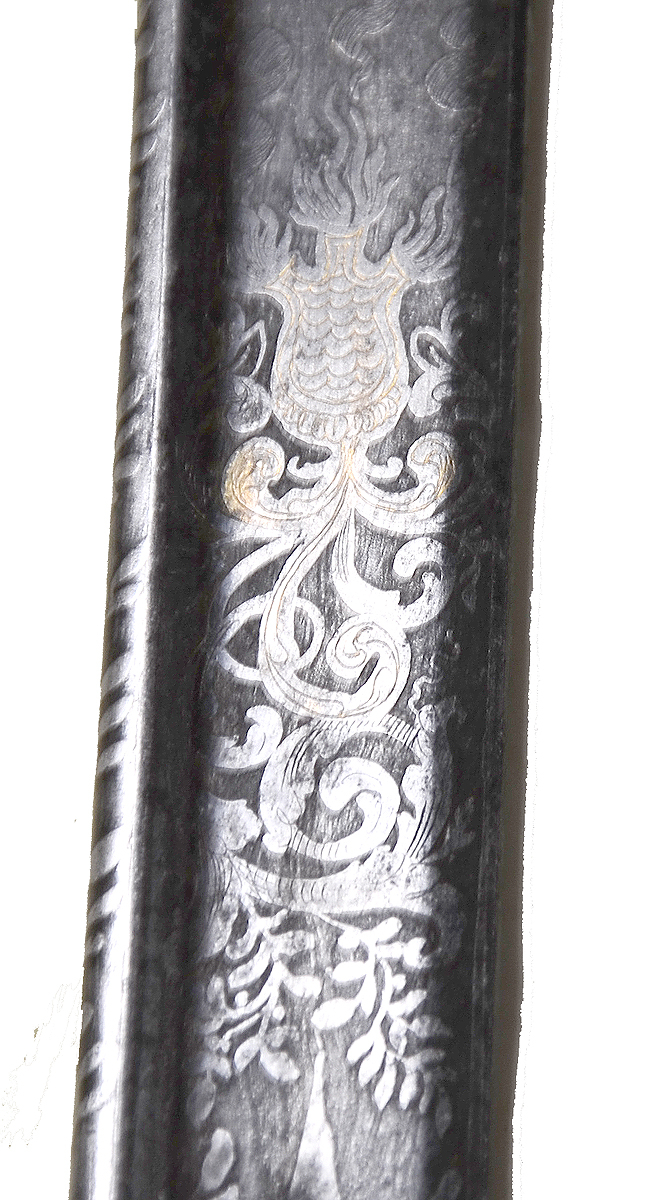

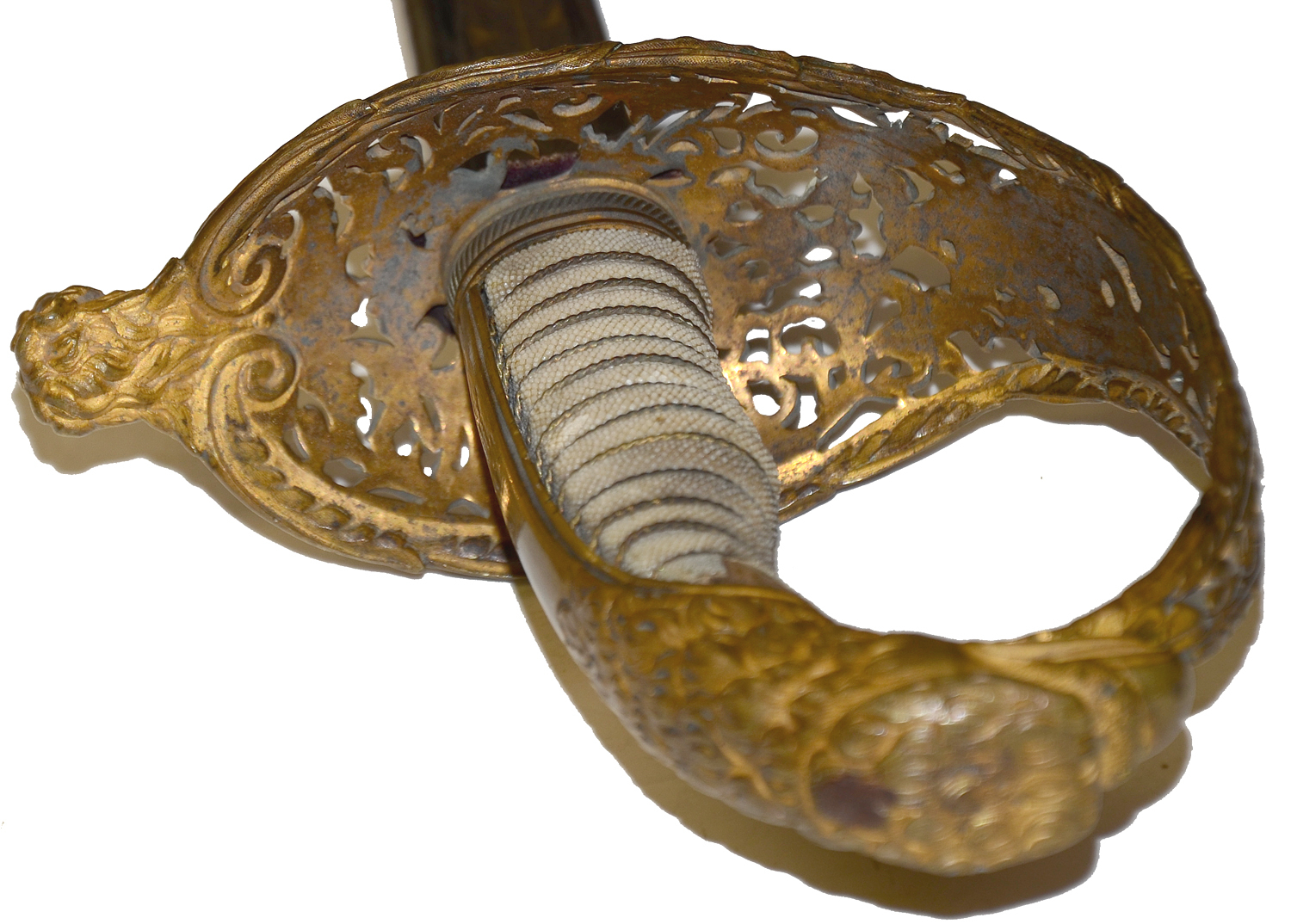
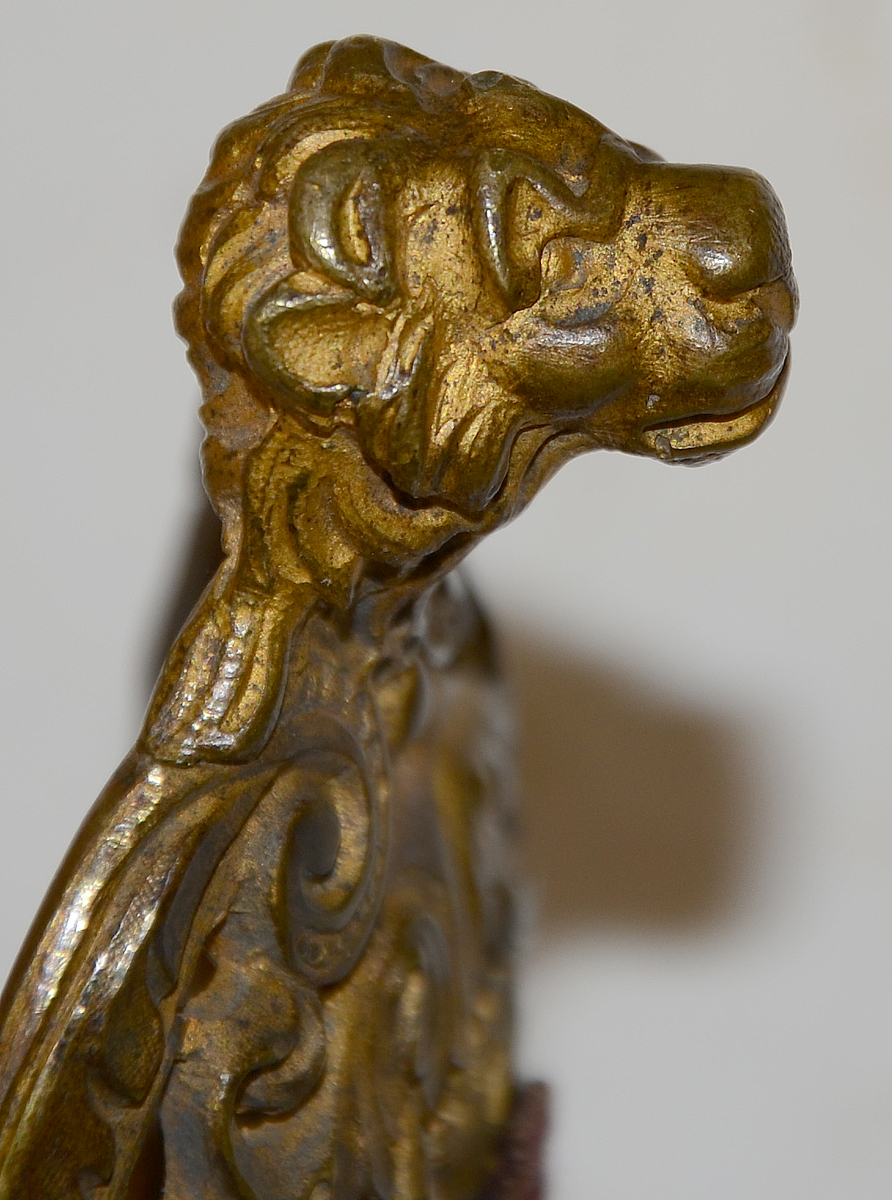
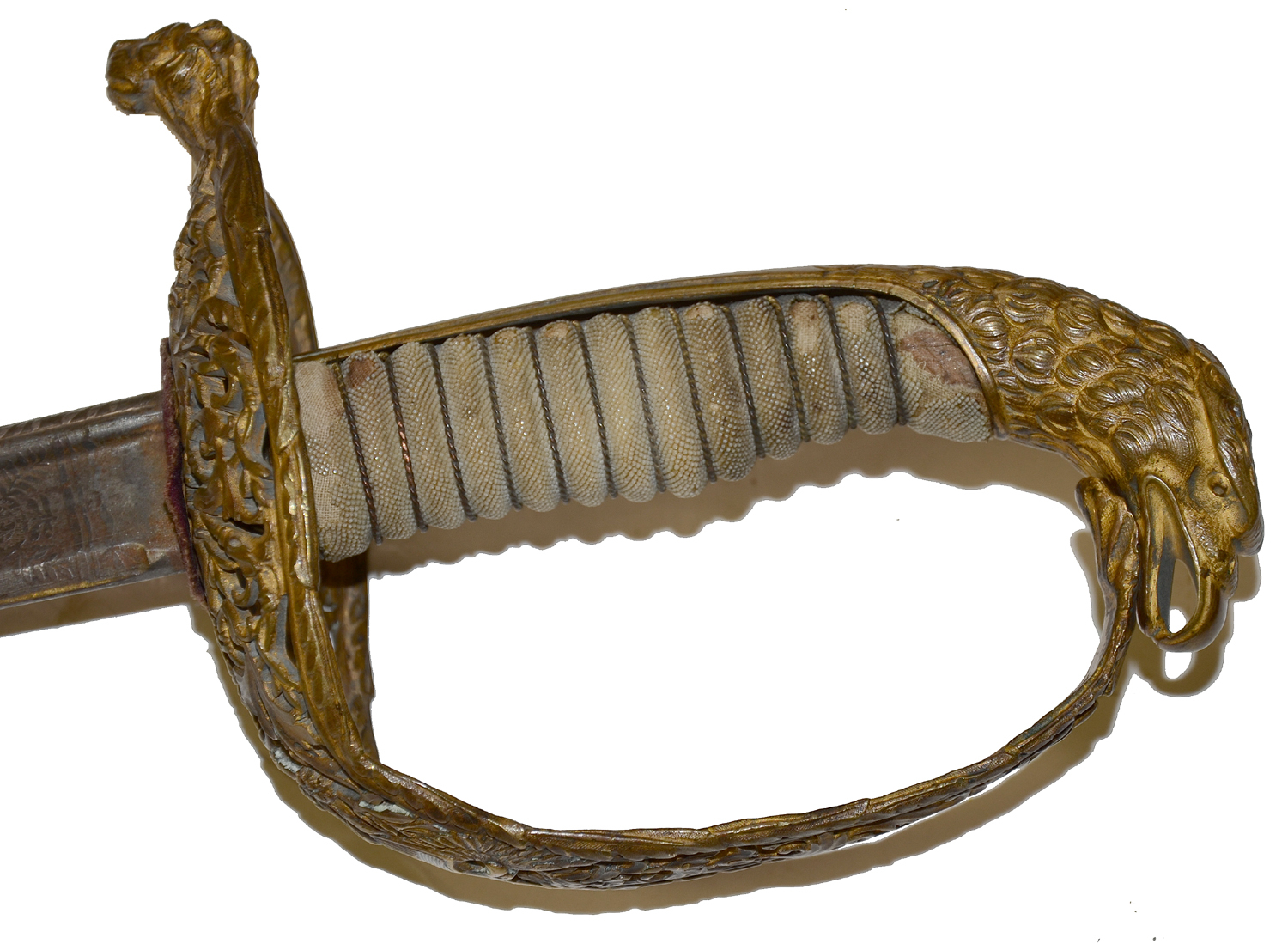
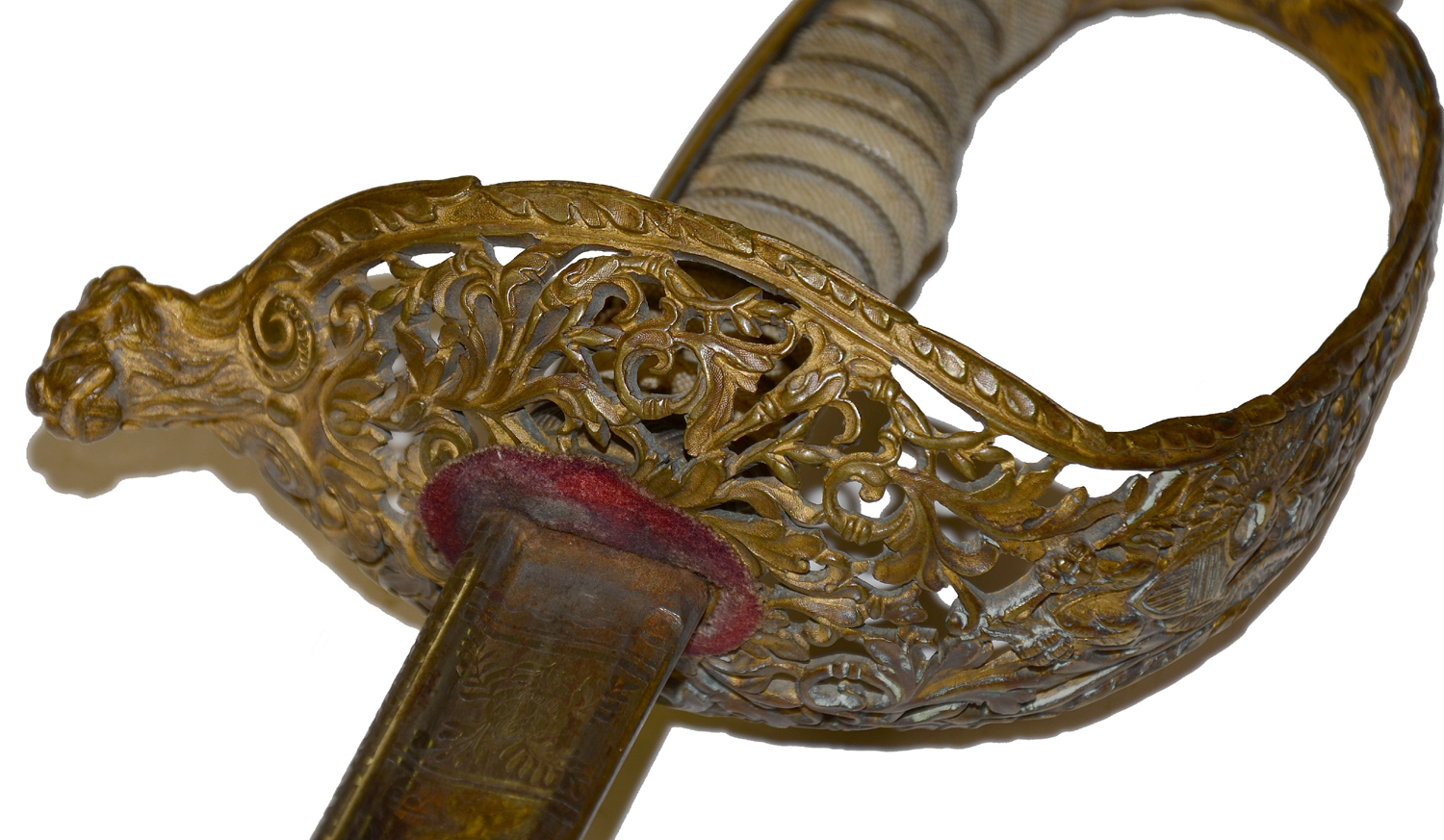
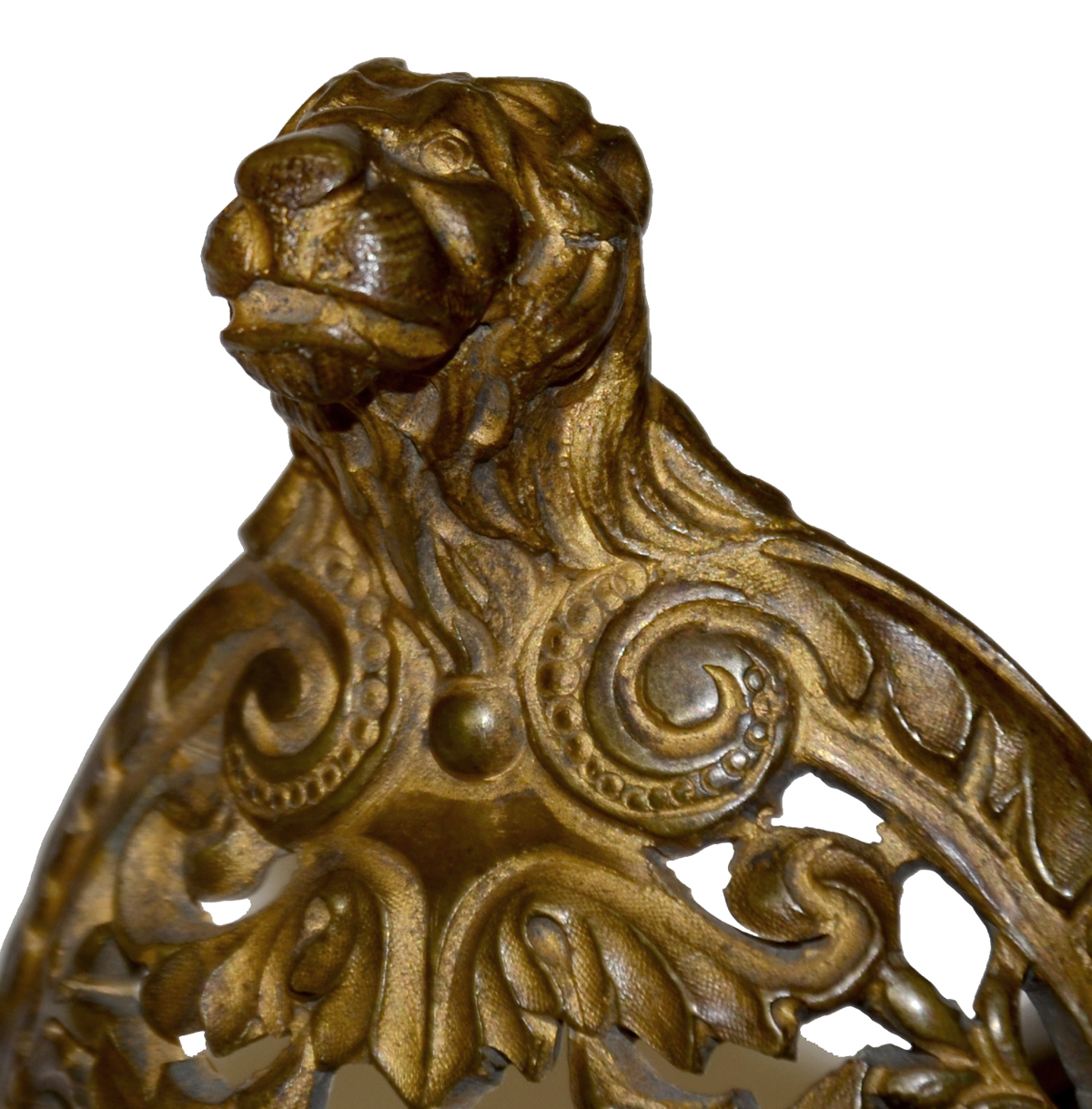



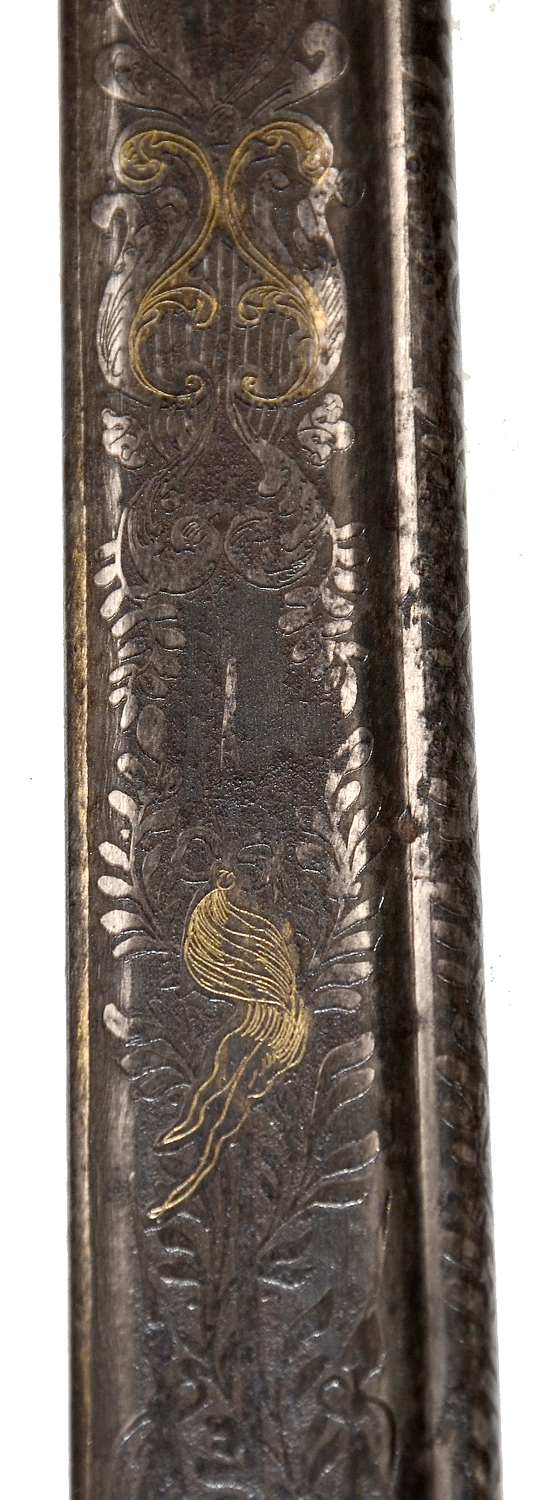

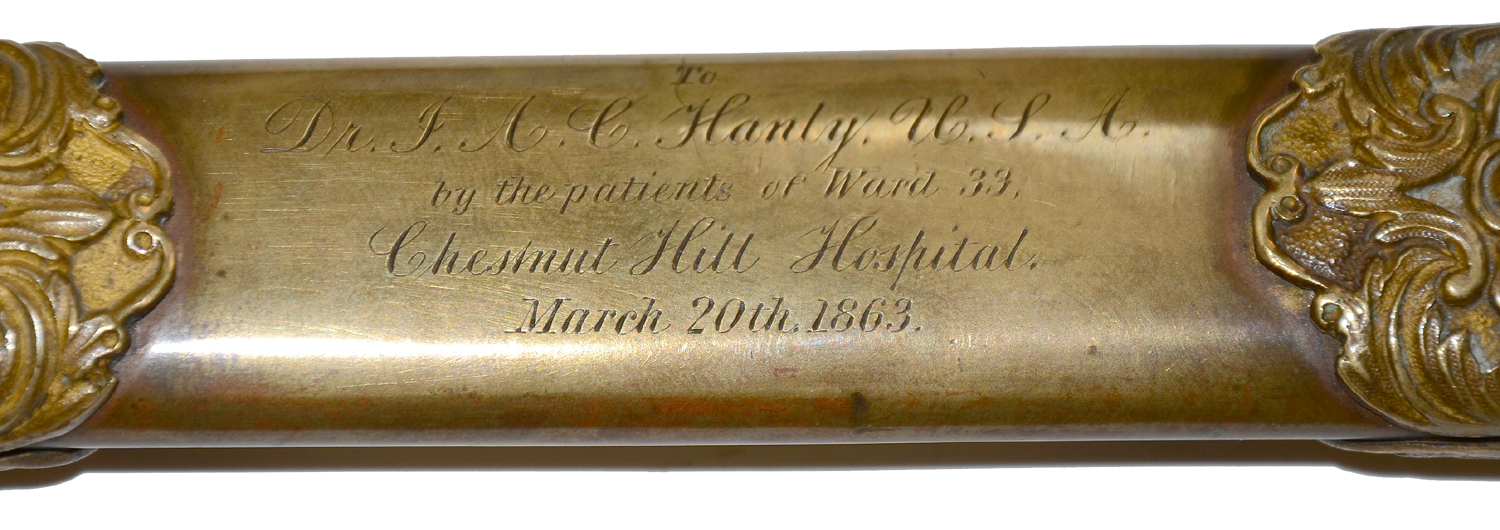





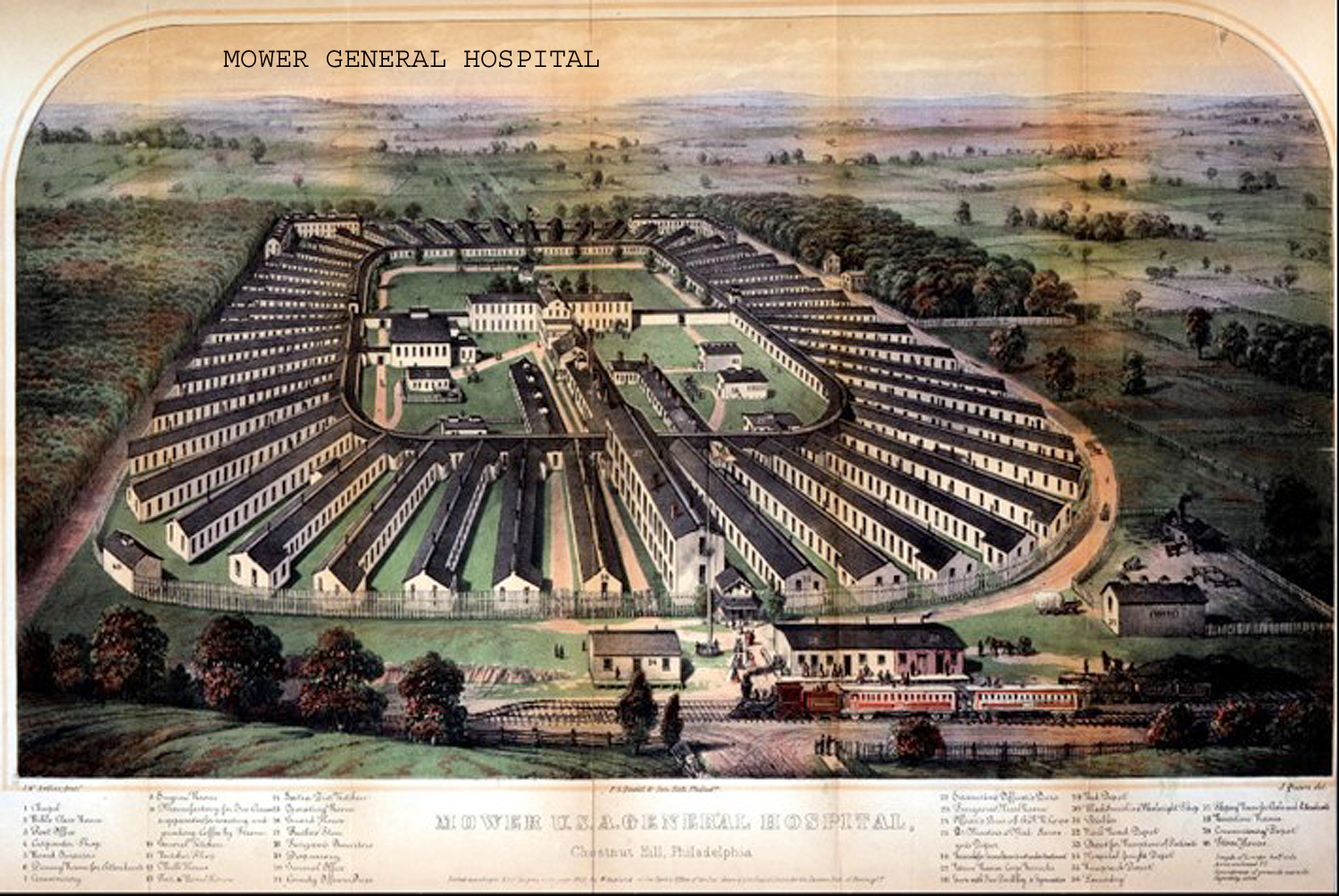
$4,050.00 SOLD
Originally $5,400.00
Quantity Available: None
Item Code: 870-613
Mower General Hospital, first known as Chestnut Hill Hospital, was one of the largest U.S. General Hospitals. Planned and built in 1862, it opened in early 1863 and could hold 3600 patients. Covering 27 acres the complex included 47 wards and other buildings radiating out from a central ground. More than 20,000 men passed through it during the war with a remarkably low fatality rate. Patients in Ward 33 obviously thought well of Acting Assistant Surgeon John Alonzo Clark Hanly, for they presented him with this elaborate sword on March 20, 1863. Given the date of the presentation, many of them were likely casualties of the Fredericksburg campaign the preceding December.
The sword has a gilt brass scabbard and hilt with an eaglehead pommel and white rayskin grip. The guard is a symmetrical openwork basket, somewhat in the English style, with dense scrolling floral motifs and a large U.S. eagle with upraised wings, U.S. shield on its chest, and clutching arrows and olive branch. The blade is pipebacked and profusely etched. The spine is covered with floral scrolls. The blade flats are bright etched with scattered gilt highlights. Over a floral sunburst, the obverse shows a script “P.D.L.” mark of Paul D. Luneschloss of Solingen, who supplied swords to the American trade, most notably to Tiffany. A gilt cuirass and swords at bottom support a tall lance with pennant, surrounded by vines, with a gilt highlighted knight’s helmet above and more crossed banners. The reverse has crossed flags at the bottom with a tall lance and pennant rising between them, followed by floral sprays, a heart-shaped lyre, a drum with two more crossed flags above with a sword between and a small US shield. The scabbard is brass, with separately attached brass mounts cast and chased with floral loops and scrolls, and a series of leaves on the drag, which features at the very bottom a bearded man’s face on one side and wreathed woman’s face on the other.
Between the mounts on the obverse of the scabbard is period script presentation reading:
To / Dr. J.A.C. Hanly U.S.A. / by the patients of Ward 33 / Chestnut Hill Hospital . March 20th 1863
“Chestnut Hill Hospital” was the early designation of Mower General Hospital, and can be found used in a January 17, 1863, newspaper notice that the hospital would not be ready to open until mid-February, and which also names Hanly as an Assistant Surgeon assigned to it. John Alonzo Clark Hanly (1836-1882) graduated from Jefferson Medical College of Philadelphia in the Class of 1861, needless to say, an interesting date. Indeed, his time there may have overlapped with Hunter Holmes McGuire, later Confederate surgeon, who led an exodus of southern students out of the school after John Brown’s raid in late 1859. Hanly came from a medicine-oriented family. His father was a druggist in Philadelphia and like at least two of his three brothers he learned the pharmacist trade and then studied to become a physician. He may have studied with one of his older brothers upon graduation, but on November 3, 1862, he contracted with Surgeon W.S. King, U.S. Army, to become an Acting Assistant Surgeon in the U.S. Army. As a “contract surgeon” he was not commissioned, but was ranked and paid as a first lieutenant. Men selected for these posts were to augment the army’s regular medical staff and for the most part served at general hospitals like Hanly.
Contract surgeons were paid by days on the job and it is uncertain how long Hanly was associated with the hospital or the army medical department, but a bone specimen contributed by him to the army medical museum reportedly came from a soldier wounded at the Weldon Railroad on August 23, 1864, and was excised by another contract surgeon associated with Mower General Hospital on Sept. 5, so we know he was still on duty at least that late in the war, though as a contract surgeon he may also have been pursuing private practice at the same time.
After the war Hanly continued to practice in Philadelphia. The 1870 census picks him up as a “Medical Dr. & Druggist.” His father has passed away by that time and he seems to be supporting his mother at the same address. She died in 1871 and by 1880 he is listed as single and a physician, living as a boarder on Pine Street. Late in 1880 Hanly married, but he succumbed to Bright’s Disease little more than a year later, dying on January 27, 1882. The attending physician was his brother, Michael Abbot Hanly, MD. His widow remained unmarried and survived him by 62 years, dying at age 90 in 1944.
The sword is in good, untouched condition with no nicks to blade and mix of bright metal with some dark spots above the etched panels. There is some wear to the white rayskin grip wrap and a little verdigris forming on elements the hilt scrollwork. The detailing of the eagle, lion head and floral work is quite good. The blade etching is profuse and dense enough to give an impression of damascus at first. The frosting has dulled slightly but the gilt elements are nice highlights.
We have seen newspaper accounts of at least two sword presentations made at the same period to assistant surgeons at Chestnut Hill Hospital. We have not seen an account of this presentation, but one may turn up yet. It would also be interesting to learn the identities of some of the men in Ward 33 who thought so highly of Hanly. This would be a great addition to a medical display as well as being a very nice high-grade sword in itself. [sr] [ph:L]
~~~~~~~~~~~~~~~~~~~~~~~~~~~~~~~~~~~
THIS ITEM, AS WITH ALL OTHER ITEMS AVAILABLE ON OUR WEB SITE,
MAY BE PURCHASED THROUGH OUR LAYAWAY PROGRAM.
CLICK HERE FOR OUR POLICIES AND TERMS.
THANK YOU!
Inquire About CIVIL WAR EAGLE POMMEL PRESENTATION SWORD BY PATIENTS AT MOWER GENERAL HOSPITAL TO DR. J.A.C. HANLY, MARCH 20th, 1863
Most Popular
Historical Firearms Stolen From The National Civil War Museum In Harrisburg, Pa »
Theft From Gravesite Of Gen. John Reynolds »
Selection Of Unframed Prints By Don Troiani »
Fine Condition Brass Infantry Bugle Insignia »
British Imported, Confederate Used Bayonet »
Scarce New Model 1865 Sharps Still In Percussion Near Factory New »
featured item
CLOSE TO REGULATION VIRGINIA CONFEDERATE CAPTAIN'S FROCK COAT
The coat is made of mid- gray wool, possibly imported from England. It has full-length skirts ending in the typical and desirable raw edge. The sleeves have an 8 1/2-inch billow at the elbow. The dark blue wool standing collar is 1-1/2 inches high… (1268-060). Learn More »


